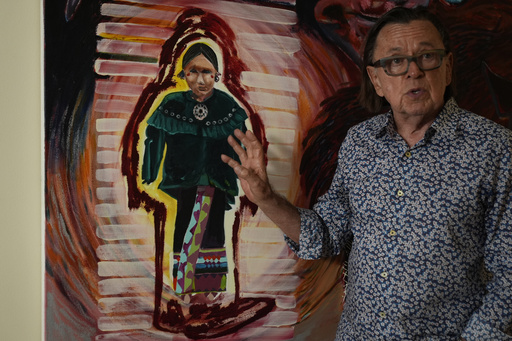Within the American Museum of Natural History, amidst the Native American exhibits, sits a small wooden doll with significant cultural importance to the tribes once residing in Manhattan. The doll, known as Ohtas or Nahneetis, has been out of sight as the museum complies with new federal regulations requiring the return of sacred or culturally significant items to tribes or obtaining consent to display them. The museum is reviewing around 1,800 items to adhere to these requirements and to revamp its exhibits, which are over half a century old.
Despite the museum’s efforts, some tribal leaders express skepticism, stating that museums have been slow to act. These regulatory changes were prompted by complaints from tribes that numerous items that should have been returned under the Native American Graves Protection and Repatriation Act of 1990 are still held by museums. Joe Baker, a member of the Delaware Tribe of Indians, emphasizes the importance of these collections as part of their heritage and family, urging for their return.
Sean Decatur, the museum’s president, assures that tribal communities will be contacted soon about the reviewed objects. Plans include opening a new exhibit in the fall that incorporates Native American voices and explains the reasons behind the exhibit closures and upcoming changes. The museum aims to completely overhaul the closed Eastern Woodlands and Great Plains halls, similar to the successful renovation of the Northwest Coast Hall in collaboration with tribes.
Lance Gumbs from the Shinnecock Indian Nation expresses concerns about the lack of representation of local tribes in public institutions due to the extended exhibit closures. He suggests using replicas created by Native peoples instead of displaying sensitive cultural items physically. Gordon Yellowman, representing the Cheyenne and Arapaho Tribes, advocates for more digital and virtual exhibits and hopes to retrieve a sketchbook by a Cheyenne warrior from the New York museum.
Various institutions, such as the Field Museum in Chicago and the Cleveland Museum in Ohio, are also adapting to the new regulations by establishing repatriation centers and revamping exhibits with tribal consent. Chuck Hoskin, chief of the Cherokee Nation, believes that institutions must no longer treat Indigenous items as mere curiosities, acknowledging the progress made in returning cultural artifacts to tribes.
Despite the technicality that the Ohtas doll is associated with a tribe outside the U.S., discussions with tribal representatives continue for its potential return. Baker insists that the ceremonial doll should not have been on display and advocates for its repatriation to the Munsee-Delaware Nation in Ontario. These efforts signify a step towards respecting the cultural significance and heritage of Indigenous communities.



